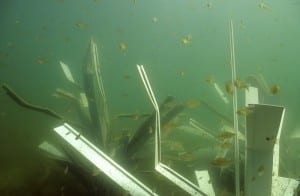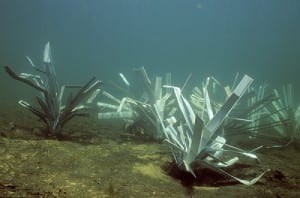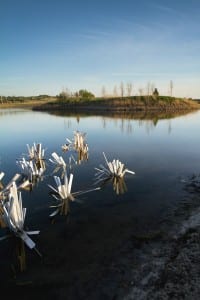|
Tag: artificial fish attractors
GreenView: Sierra Club applauds the new Great Lakes Water Quality Agreement
Updated GLWQA signed in Washington DC, September 7, 2012
By Mary Muter, Chair Sierra Club Canada Great Lakes Section
After 25 years the governments of Canada and the United States have finally come together on the terms of a new revised Great Lakes Water Quality Agreement (online here) that better reflects the current conditions of the Great Lakes than the 1987 Agreement. This new Agreement has three new Annexes – Aquatic Invasive Species, Habitat and Species and Climate Change Impacts – that will be able to take advantage of the increased knowledge on these important issues. The question is: will there be funding and resources to address the new challenges facing the Great Lakes when existing Areas Of Concern like Toronto and Detroit continue to show little sign of improvement? Dozens of unique habitat models at fishiding.com
Sierra Club applauds the governments’ commitment to prevent further loss of habitat and species that contribute to the protection of Great Lakes water quality. Those high quality coastal wetlands still intact on the Great Lakes would have to be at the top of the list needing protection. We have already lost 70% of coastal wetlands on Lakes Ontario and Erie due to pollution and/or development. Great Lakes wetlands are needed by about 80% of Great Lakes fish for spawning and or nursery habitat. If Great Lakes fish cannot find suitable spawning habitat they simply do not spawn. The Ontario Ministry of Natural Resources has already identified declining Northern Pike and Musky populations due to 13 years of sustained low water levels and loss of wetland habitat on Lakes Huron and Georgian Bay. We will be watching to see if the development and implementation of lakewide habitat and species protection, restoration, and conservation strategies will be met in their two year stated objective. Another critical issue will be whether individual targets or goals can be established for each Great Lake that reflect background conditions.
Will there be enough resources to meet these lofty objectives? It is hard to believe these objectives can be met while the Government of Canada has eliminated hundreds of science positions including closing the Experimental Lakes Project – the research station where Dr. David Schindler’s internationally respected ground-breaking research to identify phosphorus as the leading cause of algal growth. Where would we be today without that critical knowledge?
We need strengthened legislation not the weakened sections of the Fisheries Act by the removal of fish habitat. This one action alone has left thousands of un-assessed coastal wetlands now vulnerable to encroachment or degradation due to development.
Sierra Club hopes the new Agreement will better protect and restore the Great Lakes. To accomplish that our governments in Canada and the United States will need to involve the public at a very high level to ensure accountability and progress. We have a very valuable bi-national resource in the Great Lakes; to protect and restore them we require the best possible public and government actions along with the required resources. Only then will the obligations under this Agreement be fulfilled.
Last chance to secure funds for fish habitat
Time is running out to apply for more than half a million dollars worth of grants for projects to enhance recreational fishing throughout NSW. Dozens of unique habitat models at fishiding.com
Department of Primary Industries (DPI) Conservation Manager, David Cordina, said applications for the NSW Government’s Habitat Action Grant program close at 5pm on Friday 28 September 2012.
“Habitat Action Grant program grants of up to $40,000 are available for individuals or groups interested in rehabilitating fish habitat,” he said.
“These grants are open to fishing clubs, Landcare, Rivercare and other community groups, individuals, local councils and Catchment Management Authorities wanting to improve habitat for recreational fish in their local area.
“This program supports local communities in protecting good habitat, and rehabilitating degraded habitat for more productive recreational fisheries.”
Mr Cordina said projects that will be considered include bank stabilisation works, removal of barriers to fish passage, rehabilitation of riparian lands, re-snagging waterways, weed control works and reinstatement of natural flow regimes.
“Applications must relate to the improvement of fish habitat that provides direct benefit to recreational fishing,” Mr Cordina said.
“Projects that involve recreational fishers will be given preference.
“Previous community projects have provided fantastic outcomes for our native fish and are great examples of how recreational fishing fees are helping to support recreational fishing and boosting fish numbers, naturally.”
“So hurry, you have only weeks left to apply.”
The Habitat Action Grant program is funded from the NSW Recreational Fishing Trusts and is administered by DPI.
For more information about the program, examples of past Habitat Action Grant projects and application forms visit the DPI Habitat Action Grants web page, or call (02) 6881 1277 or (02) 4916 3817.
Media contact: Tom Braz 02 6391 3686 or 0428 256 596
Project aims to bring more fish to Smith Mountain Lake
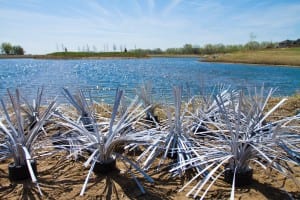
Forte, of Franklin County, designed it himself, and now the invention is part of an assortment of habitat devices that will be used to determine how to entice more fish into coves at the lake.
With the help of Internet research, Forte built a similar pyramid habitat and installed it under his boathouse a few years ago. He said it caused a “dramatic difference” in the number of fish swimming in his cove; today, there are dozens and dozens as opposed to very few.
“I just wanted to see if I could attract some fish,” he said. “And it worked.” See the dozens of unique habitat models at fishiding.com
The power company, which uses Smith Mountain and Leesville lakes to produce electricity through a two-reservoir hydroelectric generation dam, hopes to duplicate that kind of success in drawing fish to shallow water areas, said Liz Parcell, a plant manager.
Last week, workers lowered about a dozen similar fish habitat devices in areas shallower than 20 feet in the cove below the Discovery Center at Smith Mountain Lake State Park in Bedford County.
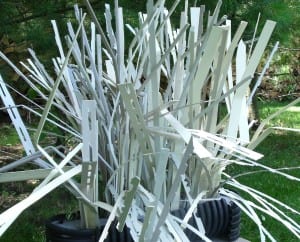
Some of the habitat designs were natural collections of brush and twigs; others were man-made and included cinder blocks, wood pallets and various pipes.
“It’s kind of like a scientific project,” Parcell said.
Some designs resembled objects that might be seen in art galleries, but that will change over time, she said. (possibly the fishiding structures)“They’ll get covered in algae; they won’t look like this for long,” Parcell said.
The goal is to study what designs work and then share that information with lake homeowners, who in turn could use it to create fish habitats of their own.
Next year, the Virginia Department of Game and Inland Fisheries will send scuba divers near the habitats placed in the water to gauge their effectiveness in drawing more fish, Parcell said.
The work is tied to the 30-year license renewal that the Federal Energy Regulatory Commission granted APCo in 2010, she said. The license, which the commission renewed after years of planning and debate among lake-area stakeholders, calls for a habitat-management plan and improved habitat along the shoreline.
Lake-area residents and landowners will have to obtain permits from the company before installing the habitats, Parcell said. APCo is working to have that process online, she said, and hopes to have it up and running soon.
“Hopefully, no one gets too excited too quickly,” she said.
By: JUSTIN FAULCONER | The News & Advance
LYNCHBURG, Va. —
Funding for Namoi River fish habitat, water improvements
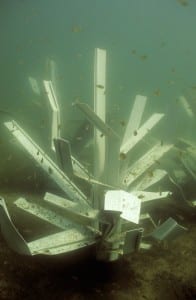 FUNDING has been announced for fish habitat improvement on the Namoi River between Gunnedah and downstream Narrabri. The improvements are aimed at enhancing river health and increasing the fish population, says the State Department of primary Industries (DPI). Applications for funding, under the federal Government’s Clean Energy Future Biodiversity Fund, are invited from landholders adjacent to the Namoi River and associated tributaries, local councils, community groups and fishing clubs, along the 150km stretch from Gunnedah to of Narrabri. See the dozens of unique habitat models at fishiding.com Project co-ordinator and DPI fisheries conservation manager, Milly Hobson, has encouraged landholders to apply for fish habitat funding and become involved in the project. “Funding is available for a range of on-ground works including fencing and revegetation, control of woody weeds, establishment of off-stream stock watering points and the planting of windbreaks and wildlife corridors that connect areas to the river,” Ms Hobson says in a statement. “Activities undertaken by the local community will help protect and enhance native fish habitat, water quality and overall river health. “At the same time the increased the carbon held in trees and native vegetation will help to tackle climate change. “This stretch of the river forms the Namoi demonstration reach, an ongoing project that showcases river health improvement activities landholders can use to increase biodiversity and protect the local environment. “A considerable amount of on-ground work has already been completed throughout the reach over the last five years, and this new partnership will add value to those successful river and wetland rehabilitation activities,” says Ms Hobson. Habitat degradation along waterways has placed extreme pressure on native fish, with some important species such as Murray cod, silver perch and the freshwater catfish now listed as threatened species, she says. “Our aim with this project is to turn the situation around, by providing landholders with funding to undertake works that deliver on-farm benefits as well,” says Ms Hobson. “Landholders and community groups can find out more about this program and receive assistance in developing ideas or project plans by getting in touch with me.” Ms Hobson can be contacted by email at milly.hobson@dpi.nsw.gov.au or by phone on (02) 6763 1206. Expression of interest forms and additional project information are available at the DPI website. | ||
National Fish Habitat Partnership Releases Updated Action Plan to Conserve America’s Aquatic Resources
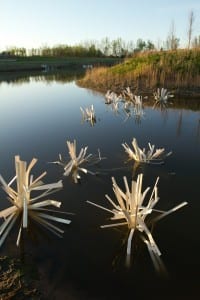
The new, second edition of the National Fish Habitat Action Plan advances science-based conservation mission and incorporates new objectives focused on locally driven efforts to reverse deteriorating fish habitats.

National Fish Habitat Action Plan, Second Edition
Washington, DC (PRWEB) August 29, 2012
The National Fish Habitat Board today released the second edition of the National Fish Habitat Action Plan (Action Plan), setting forth a mission-critical approach to conserving the nation’s aquatic resources for the future. The original National Fish Habitat Action Plan, created in 2006, carried a great vision forward to protect, restore and enhance aquatic habitats through partnerships. While the original Plan met its objectives set forth in 2010, the mission and goals of the plan remain the same and are the foundation of the second edition of the Plan for 2012 and beyond.
The second edition of the National Fish Habitat Action Plan is built on the foundation of advancing the conservation practices of the individual National Fish Habitat Partnerships, the working units of the National Fish Habitat Partnership. The five new objectives in the Plan include:
- Achieve measurable habitat conservation results through strategic actions of Fish Habitat Partnerships that improve ecological condition, restore natural processes, or prevent the decline of intact and healthy systems leading to better fish habitat conditions and increased fishing opportunities.
- Establish a consensus set of national conservation strategies as a framework to guide future actions and investment by the Fish Habitat Partnerships by 2013.
- Broaden the community of support for fish habitat conservation by increasing fishing opportunities, fostering the participation of local communities – especially young people – in conservation activities, and raising public awareness of the role healthy fish habitats play in the quality of life and economic well-being of local communities.
- Fill gaps in the National Fish Habitat Assessment and its associated database to empower strategic conservation action supported by broadly available scientific information, and integrate socio-economic data in the analysis to improve people’s lives in a manner consistent with fish habitat conservation goals.
- Communicate the conservation outcomes produced collectively by Fish Habitat Partnerships as well as new opportunities and voluntary approaches for conserving fish habitat to the public and conservation partners.
The second edition of the Action Plan details how the new objectives will be implemented. The Plan also highlights conservation “Partnership in Action” stories from Fish Habitat Partnerships to provide insight into their work on the ground. Other sections explain the functions of the National Fish Habitat Board and Partnerships and the critical role of science and data and effective communications to guide activities. Interesting facts and figures related to the National Fish Habitat Partnership, recreational and commercial fishing fill out the rest of the Plan. See the dozens of unique habitat models at fishiding.com
“The revised Action Plan is built on the success and experiences of our Partners,” said Kelly Hepler, Chairman of the National Fish Habitat Board and Assistant Commissioner, Alaska Department of Fish and Game. “Creating and maintaining these Partnerships is the foundation of the Action Plan and will be the primary focus as we address conservation needs for our nation’s waterways now and into the future.”
The National Fish Habitat Board, Fish Habitat Partnerships, federal and state natural resource agencies, conservation organizations and the National Fish Habitat Partner Coalition participated in the selection process of the revised Plan objectives. The release of the revised Action Plan coincides with the launch of the updated National Fish Habitat Partnership website at http://www.fishhabitat.org.
To view and download a PDF of the revised Action Plan, visit http://www.fishhabitat.org/images/nfhp_ap_final.pdf.
About the National Fish Habitat Partnership
The National Fish Habitat Partnership (http://www.fishhabitat.org) works to conserve fish habitat nationwide—leveraging federal, state and private funding sources to achieve the greatest impact on fish populations through priority conservation projects. The national partnership implements the National Fish Habitat Action Plan and supports 18 regional grassroots partner organizations.
Construction Starts on Two Dry Creek Fish Habitat Projects
(Healdsburg, CA) During the next week, construction will start on the first phase of a six-mile habitat enhancement project in the Dry Creek Valley. The purpose of the project, which is being conducted by the Sonoma County Water Agency (Water Agency) in cooperation with private landowners and by the U.S. Army Corps of Engineers (USACE), is to provide habitat for endangered coho salmon and threatened steelhead and Chinook. During the first phase of this multi-year project, an estimated 560 tons of boulders and 202 trees, root wads and logs will be used to create backwaters, side channels and shady habitat for the young fish that live in Dry Creek during the summer.
“This is a massive enhancement project that will provide big benefits for fish on the brink of extinction in our area,” said Sonoma County Supervisor and Water Agency Director Mike McGuire. “Dry Creek Valley farmers deserve tremendous thanks for their partnership and willingness to move this project forward.”
“We are excited to be starting construction on a project that should provide immediate help to the coho and steelhead raised at hatcheries at Warm Spring Dam and released into Dry Creek and its tributaries,” said Lt. Col John Baker, commander of the USACE San Francisco District. See the dozens of unique habitat models at fishiding.com
The habitat enhancement is required by National Marine Fisheries Service (NMFS) to help restore endangered and threatened fish to the watershed. The first phase of Dry Creek habitat enhancement involves two projects, as follows:
• The Water Agency Dry Creek Demonstration Project is centered on Lambert Bridge and is nearly one-mile in length. Construction in 2012 will take place at Quivira Winery and Vineyards. The Laytonville-based firm Bio-Engineering Associates is conducting the work at Quivira, which will be complete by mid-October. Work on the majority of the Dry Creek Demonstration Project will take place during 2013.
• The USACE project (known as the “Reach 15” project, for its location directly below Warm Springs Dam) is 1,400 feet long and is located on property owned by USACE. Contractor Services Group is overseeing construction which will take place through mid-October and during summer 2013.
Elements of the projects include bank stabilization to reduce erosion, boulders and anchored log jams to provide refuge and to slow the water, constructed backwaters and side channels to give the young fish places to escape summer and winter high flows, and native plants to reduce erosion and create shade.
“The habitat enhancements fit into Quivira’s holistic approach to grape growing and wine making. By improving Dry Creek, we improve the health of the land, helping both people and fish,” said Quivira Winery representative Ned Horton.
The majority of work on the Water Agency’s Dry Creek Demonstration Project will occur in 2013, and involves several landowners including Amista Vineyards, Dry Creek Vineyard, Rued Winery, Seghesio Family Vineyards and Yellow Dog Vineyards. The demonstration project also includes individual landowners Doug Lipton and Cindy Daniels, Carole and Geno Mascherini, Peter and Marian Van Alyea and Ron Wolmer.
When complete, the Dry Creek Demonstration Project and Reach 15 Project will serve as the first mile of habitat enhancement of the six miles required in NMFS’ Russian River Biological Opinion. The Biological Opinion was issued in 2008, and requires the Water Agency and the USACE to improve habitat for juvenile coho and steelhead in Dry Creek as an alternative to reducing summertime flows in the creek. (The high velocity of water flowing in Dry Creek in the summer was found by NMFS’ biologists to be detrimental to the survival of young coho and steelhead.)
“By breaking ground for this project the agency partners and landowners are reaching an important milestone on the road to conservation of our Russian River coho salmon and steelhead. This investment will not only benefit our fisheries, but is also an investment in the overall health of our watershed,” said Dick Butler, National Marine Fisheries Service.
Since nearly all of the 14-mile Dry Creek is privately owned, the required six miles of habitat enhancement is dependent on cooperative landowners. The demonstration project and the Reach 15 project will allow landowners, the Water Agency, the USACE, NMFS and California Department of Fish and Game to observe how enhancements work on a smaller scale.
“The coho broodstock program and stream enhancement projects in the Russian River watershed, including these important projects in Dry Creek, contribute greatly to coho salmon conservation. By enhancing and creating this habitat, we are improving conditions for coho and providing people more opportunities to enjoy and participate in coho habitat restoration successes,” said Scott Wilson, Acting Regional Manager, California Department of Fish and Game.
Dry Creek residents who notice any problems or who have immediate concerns regarding construction issues are urged to contact the Water Agency public information officer, Ann DuBay at (707) 524-8378, ann.dubay@scwa.ca.gov , or the USACE onsite engineer, Carlos Hernandez at (707) 431-4550 orCarlos.R.Hernandez@usace.army.mil.
Laytonville-based Bio-Engineering Associates specializes in construction of creek restoration and habitat enhancement features that also help reduce erosion. Several of the firm’s projects have been on major creeks located within vineyards.
Contractor Services Group, located in West Sacramento, is a full-service contracting company with experience in conducting large-scale restoration projects.
To learn more about NMFS’ Biological Opinion and Dry Creek requirements go to http://www.scwa.ca.gov/drycreek/. For additional details on the demonstration project, go tohttp://www.scwa.ca.gov/files/docs/projects/rrifr/DryCreek-Habitat.pdf.
Sonoma County Water Agency provides water supply, flood protection and sanitation services for portions of Sonoma and Marin counties. Visit us on the Web at www.sonomacountywater.org.
Ann DuBay
Public Information Officer
Office: (707) 524-8378
Mobile: (707) 322-8185
Email: ann.dubay@scwa.ca.gov
Ausable River Restoration Project reaches completion
KEENE VALLEY – At last. The Rivermede Project – officially known as the East Branch Ausable River Restoration Project at Rivermede – is essentially done.
For a long time, this half-mile stretch of river in Keene Valley was growing broader and shallower, filling with sediment and gravel as its banks eroded and fell in, eating the land of Rivermede Farm at a rate of several feet a year and losing habitat for fish, amphibians and reptiles.
Beginning in July, 2012, large trees were dug out of the ground nearby and imbedded in the riverbank, root wads facing into the stream as fish habitat, the trunks buried side by side to stabilize the bank.
Carl Schwartz, of U.S. Fish & Wildlife Service, leads a tour of the recently completed Rivermede riverbank stabilization and restoration project on the east branch of the Ausable River in Keene Valley Thursday, Aug. 16.
“Fish, llittle minnows and bigger fish, appeared immediately, as soon as the habitat was restored,” said Corrie Miller, director of the Ausable River Association.
At the toe of the bank, underwater, where they will not decay, logs are buried, covered with a layer of woody debris and fill, live cuttings, and then a sod mat of jute or similar material, for the cuttings to grow through. This constitutes a bench, which deflects water currents, preventing scouring of the bank.
As plant life grows, it will stabilize the bank further. Every boulder, natural as it looks, was scientifically placed to maneuver the current just so, preventing scouring of the bank and moving the water, and sediment, in a way that benefits the river and its environs.
Riverbank stabilization experts used to think it was all about water dynamics.
“Now we know it’s also about sediment being moved and deposited,” Miller said.
Flood plain room is allowed for seasonal overflow of water and sediment; floods cannot be prevented, nor can they be contained or controlled with straight channeling.
“We want to make it look as if we were never here,” Schwartz said.
Miller said that willow shoots were planted to stabilize the bank, and started sprouting leaves right away. Willows root easily and quickly along a riverbank. More plantings will be made next spring, she said.
According to Braico and Schwartz, this design has a better chance of holding than older, less natural methods. Everyone concerned seemed to be crossing fingers that another major weather event will not take place before this restoration settles in and takes hold.
Thursday, Aug. 16, two days after completion, tours were held at the site to explain what had been done to restore natural riparian (riverbank) equilibrium. About 80 people attended the tours.
Rob Hastings, Rivermede farmer, who has contributed time and money to the effort over the years, was present. He expressed his happiness that the project is done and that the river looks so beautiful, as well as his hope that it will hold.
Instruction was given by John Braico of Trout Unlimited and Carl Schwartz of F&W. Corrie Miller, Director of the Ausable River Association, Tonnie Sauca, standing in for David Reckahn of Essex County Soil and Water Conservation District, and Martha Naley, of F&W, were also helpful in explaining the project and the science behind it to participants.
The Keene Town Board, represented by Councilman Paul Martin, presented Braico with a plaque in recognition of his years of service and extensive volunteer work on this project.
Former Keene Supervisor Tom Both, who presided over the early planning days of the “Rivermede Project,” praised Braico at the August town board meeting, stating that Braico has “devoted thousands of hours to this project over 15 years.”
In 1998, Trout Unlimited began initial studies of the problem.
The Army Corps of Engineers became involved with the project in 2005, then finally withdrew in 2012 because the town could not come up with sufficient funding for the Army Corps plan. That same month, Trout Unlimited approached U.s. Fish & Wildlife Service, asking to partner with them to do a different version of the stalled 15-year project within a modest budget.
Between July 14 and August 14, 2012, inside 23 work days, under the direction of US Fish & Wildlife Service and Trout Unlimited, Ward logging LLC, under Michael Ward, harvested and staged whole trees, logs and boulders from the Rivermede area and performed active construction. Seeding and mulching was done by TU, F&W and Essex County Soil and Water Conservation District.
There is no riprap at this site. All materials are from the neighborhood, following a healthy, natural river model. According to Trout Unlimited information, extreme floods are increasing in frequency, and methods including dredging, straightening, laterally confining, vertically entrenching and overwidening stream beds are unstable and can cause destruction to roads, bridges and buildings in major floods.
As an example, containment of the Ausable’s East Branch at its present width of 176′ would entail dredging to 19.4,’ according to TU statistics.
With unpredictable weather patterns that have been bringing frequent “100-year storms,” probably everyone in town is, like Rob Hastings of Rivermede, thankful and at the same time hoping it will work.
Funding for the project was provided primarily by The Adirondack Chapter of trout Unlimited, U. S. Fish & Wildlife Service and Essex County. Additional financial support was provided by Trout Unlimited of Tri Lakes, Lake Champlain and New York City, as well as Rivermede Farm, the town of Keene and the Ausable River Association.MARTHA ALLEN , Lake Placid News
See the dozens of unique habitat models at fishiding.com
NOAA Joins Partners to Award $800,000 for Living Shorelines, a New Way to Combat Erosion, Build Fish Habitat
Eric Schwaab, NOAA’s Assistant Administrator for Fisheries, was in Annapolis Thursday with U.S. Senator Ben Cardin, Chesapeake Bay Trust Executive Director Jana Davis, Maryland Department of Environment Secretary Dr. Robert Summers, Maryland Department of Natural Resources Secretary John Griffin and others to announce $800,000 in federal, state and private funding to create “living shorelines” on Chesapeake Bay.
Shorelines, like those in the bay, are often stabilized with hard materials, such as bulkheads and seawalls. Ironically, these structures often increase the rate of coastal erosion, and provide little habitat for fish and wildlife. Living shorelines mimic nature by using plants, sand, and sometimes rock to stabilize banks while maintaining and improving valuable fish and wildlife habitat.
Sixteen homeowner associations, nonprofit organizations, and municipalities in Maryland and Virginia have been selected to be part of the program to develop living shorelines and increase public understanding of the technique.
“In order to fully restore our great Chesapeake Bay, we are going to have to employ a multitude of techniques, including the creation of living shorelines,” said Senator Cardin, a longtime supporter of bay restoration. See the dozens of unique habitat models at fishiding.com
“Living shorelines are a win-win solution to shoreline erosion. They replace hardened structures with more natural, vegetated shorelines that not only prevent erosion and protect shorelines, but also provide habitat for fish and wildlife,” said Schwaab.
NOAA was one of the founding partners of the living shoreline program, which to date has funded 68 projects, created 28,000 linear feet of living shoreline—the length of the Bay Bridge!—and 18 acres of wetland habitat. NOAA and the Chesapeake Bay Trust each contributed $275,000 to the $800,000 award; the Maryland Department of the Environment contributed about $200,000; and the Maryland Department of Natural Resources contributed $50,000.
Pond farming takes lead in fish supply
Fish from ponds and ditch now accounts for 41 percent of total yearly production of 30.61 lakh tonnes.
A decade ago, its contribution was 34 percent, according to the Department of Fisheries (DoF).
Contribution of fish caught from rivers fell to 34 percent in fiscal 2010-11.
Declining fish habitat, the ongoing destruction of juvenile fish by using monofilament synthetic nylon fibre net and mosquito net, and environmental pollution are the major reasons behind the falling supplies of fish from rivers.
“An increased production and availability of fingerlings and hatchlings because of growth in hatcheries has played a key role in expansion of fish farming,” said Krishnendu Saha, chief fisheries extension officer of the DoF.
Over the past two decades, private investors established more than 800 fish hatcheries.
Their interest grew due to a business prospect against the backdrop of falling catches in open water areas and rising demand for fish.
Initiatives by the government and NGOs to motivate farmers also facilitated farming for common carp, pangus, monosex tilapia and shing (cat fish) in regions such as Mymensingh, northern districts, Jessore and Comilla.
Saha said many people in these areas entered freshwater fish farming because common carps (ruhi, katla, silver carp), pangus and tilapia become marketable in a short time.
It enables the farmers to gain higher profit from fish than growing crops such as paddy and jute, he said.
“Many people in greater Mymensingh have started fish culturing by making ditches in crop fields,” said Saha.
According to the DoF data, total pond area under fish farming was 2.42 lakh hectares early this decade, and such areas rose to 3.96 lakh hectares in fiscal 2010-11.
Production also rose to 12.70 lakh tonnes in 2010-11 from 11.40 lakh tonnes a year ago.
In fiscal 1999-2000, total production of fish from pond was 5.61 lakh tonnes, according to the DoF.
Sajjad Hossain, managing director of Joyda Aquafarm Ltd, said many people are engaged in pangus farming because it needs low investment.
Technologies were also easy for the farmers to follow, said Hossain of Joyda, which produces pangus fries at hatcheries, cultures those and sells to market.
The company produces 2,500 tonnes of pangus a year, he said.
M Mahfujul Haque, a professor of the Department of Aquaculture of Bangladesh Agricultural University, said the country has a huge potential to expand fish farming as only 11 percent of its pond resources have so far been exploited for fish.
In the past, fish was cultured in ponds by collecting hatchlings from natural sources. But the main breakthrough came since the beginning of artificial propagation, he said.
“Large investments have come in fish farming and some farms have gone for vertical integration,” said Haque
He said expansion of fish farming created job opportunities for many and augmented incomes of farmers. Some 25 types of jobs have been created because of fish farming, he added.
“The socio-economic impact of fish farming is huge,” said Haque, adding that many educated people entered such a farming failing to get jobs in the formal sector.
However, challenges are increasing. See the dozens of unique artificial fish habitat models at fishiding.com, the leader in true fish protection.
“Fries are not growing fast nowadays like the past. Inbreeding is also widespread,” said Hossain of Joyda Aquafarm.
At the same time, productivity of ponds is declining because of continuous farming in the same ponds.
“But production costs are rising because of soaring feed prices and other costs. It reduces profit margins,” he said.Sohel Parvez


